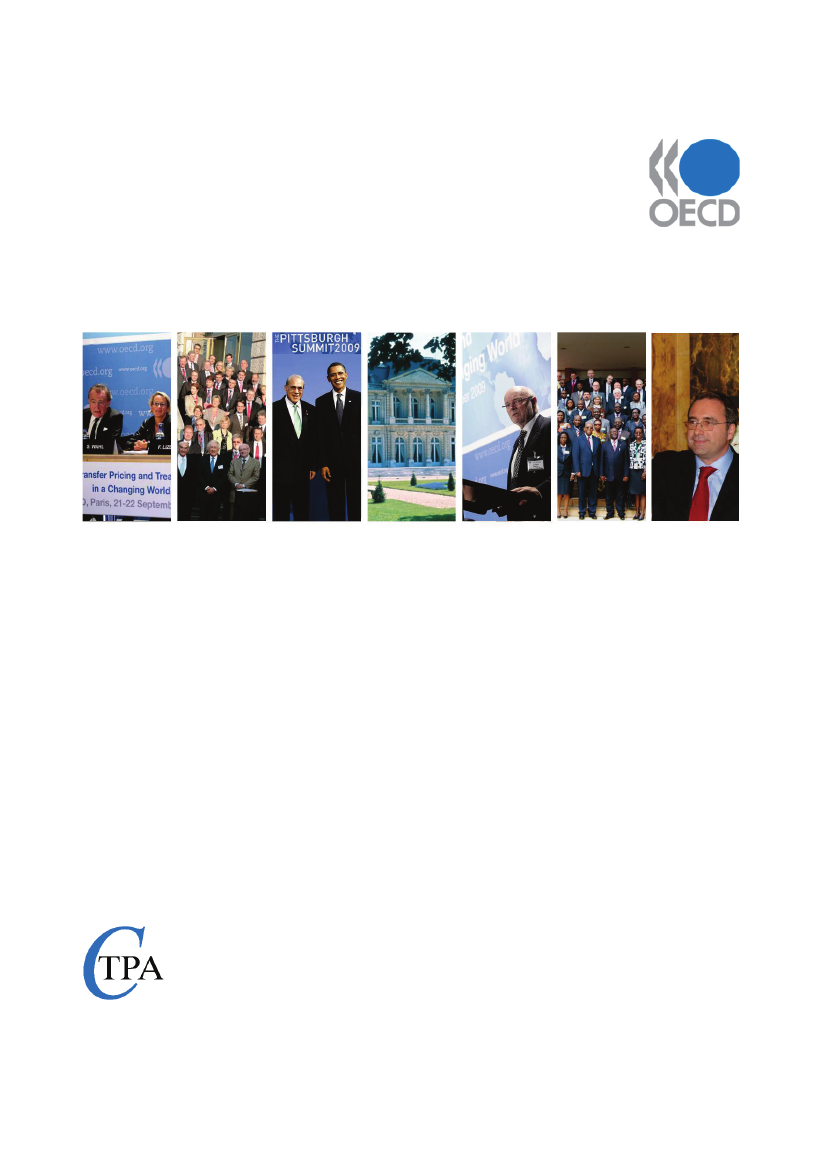Skatteudvalget 2011-12
L 195 Bilag 12
Offentligt
Uddrag med relevans for Kildeskattelovens § 2, stk. 1, nr. 3, (arbejdsudleje)
ORGANISATION FOR ECONOMIC CO-OPERATION AND DEVELOPMENT
THE 2010 UPDATE TO THE MODEL TAX CONVENTION
22 July 2010
CENTRE FOR TAX POLICY AND ADMINISTRATION
services rendered by an individual may properly be regarded by a State as rendered in anemployment relationship rather than as under a contract for services concluded between twoenterprises, that State should logically also consider that the individual is not carrying on thebusiness of the enterprise that constitutes that individual’s formal employer; this could berelevant, for example, for purposes of determining whether that enterprise has a permanentestablishment at the place where the individual performs his activities.8.12 It will not always be clear, however, whether services rendered by an individual mayproperly be regarded by a State as rendered in an employment relationship rather than asunder a contract for services concluded between two enterprises. Any disagreement betweenStates as to whether this is the case should be solved having regard to the following principlesand examples (using, where appropriate, the mutual agreement procedure).8.13 The nature of the services rendered by the individual will be an important factor sinceit is logical to assume that an employee provides services which are an integral part of thebusiness activities carried on by his employer. It will therefore be important to determinewhether the services rendered by the individual constitute an integral part of the business ofthe enterprise to which these services are provided. For that purpose, a key consideration willbe which enterprise bears the responsibility or risk for the results produced by the individual’swork. Clearly, however, this analysis will only be relevant if the services of an individual arerendered directly to an enterprise. Where, for example, an individual provides services to acontract manufacturer or to an enterprise to which business is outsourced, the services of thatindividual are not rendered to enterprises that will obtain the products or services in question.8.14 Where a comparison of the nature of the services rendered by the individual with thebusiness activities carried on by his formal employer and by the enterprise to which theservices are provided points to an employment relationship that is different from the formalcontractual relationship, the following additional factors may be relevant to determine whetherthis is really the case:��������who has the authority to instruct the individual regarding the manner in which thework has to be performed;who controls and has responsibility for the place at which the work is performed;the remuneration of the individual is directly charged by the formal employer to theenterprise to which the services are provided (see paragraph 8.15 below);who puts the tools and materials necessary for the work at the individual’s disposal;who determines the number and qualifications of the individuals performing the work;who has the right to select the individual who will perform the work and to terminatethe contractual arrangements entered into with that individual for that purpose;who has the right to impose disciplinary sanctions related to the work of thatindividual;who determines the holidays and work schedule of that individual.
8.15 Where an individual who is formally an employee of one enterprise provides services toanother enterprise, the financial arrangements made between the two enterprises will clearlybe relevant, although not necessarily conclusive, for the purposes of determining whether theremuneration of the individual is directly charged by the formal employer to the enterprise towhich the services are provided. For instance, if the fees charged by the enterprise that67
formally employs the individual represent the remuneration, employment benefits and otheremployment costs of that individual for the services that he provided to the other enterprise,with no profit element or with a profit element that is computed as a percentage of thatremuneration, benefits and other employment costs, this would be indicative that theremuneration of the individual is directly charged by the formal employer to the enterprise towhich the services are provided. That should not be considered to be the case, however, if thefee charged for the services bears no relationship to the remuneration of the individual or ifthat remuneration is only one of many factors taken into account in the fee charged for what isreally a contract for services (e.g. where a consulting firm charges a client on the basis of anhourly fee for the time spent by one of its employee to perform a particular contract and thatfee takes account of the various costs of the enterprise), provided that this is in conformity withthe arm’s length principle if the two enterprises are associated. It is important to note,however, that the question of whether the remuneration of the individual is directly charged bythe formal employer to the enterprise to which the services are provided is only one of thesubsidiary factors that are relevant in determining whether services rendered by that individualmay properly be regarded by a State as rendered in an employment relationship rather than asunder a contract for services concluded between two enterprises.8.16 Example 1: Aco, a company resident of State A, concludes a contract with Bco, acompany resident of State B, for the provision of training services. Aco is specialised intraining people in the use of various computer software and Bco wishes to train its personnelto use recently acquired software. X, an employee of Aco who is a resident of State A, is sent toBco’s offices in State B to provide training courses as part of the contract.8.17 In that case, State B could not argue that X is in an employment relationship with Bcoor that Aco is not the employer of X for purposes of the convention between States A and B. Xis formally an employee of Aco whose own services, when viewed in light of the factors inparagraphs 8.13 and 8.14, form an integral part of the business activities of Aco. The servicesthat he renders to Bco are rendered on behalf of Aco under the contract concluded between thetwo enterprises. Thus, provided that X is not present in State B for more than 183 days duringany relevant 12 month period and that Aco does not have in State B a permanentestablishment which bears the cost of X’s remuneration, the exception of paragraph 2 ofArticle 15 will apply to X’s remuneration.8.18 Example 2: Cco, a company resident of State C, is the parent company of a group ofcompanies that includes Dco, a company resident of State D. Cco has developed a new world-wide marketing strategy for the products of the group. In order to ensure that the strategy iswell understood and followed by Dco, which sells the group’s products, Cco sends X, one of itsemployees who has worked on the development of the strategy, to work in Dco’s headquartersfor 4 months in order to advise Dco with respect to its marketing and to ensure that Dco’scommunications department understands and complies with the worldwide marketing strategy.8.19 In that case, Cco’s business includes the management of the world-wide marketingactivities of the group and X’s own services are an integral part of that business activity. Whileit could be argued that an employee could have been easily hired by Dco to perform thefunction of advising the company with respect to its marketing, it is clear that such function isfrequently performed by a consultant, especially where specialised knowledge is required for arelatively short period of time. Also, the function of monitoring the compliance with thegroup’s worldwide marketing strategy belongs to the business of Cco rather than to that ofDco. The exception of paragraph 2 of Article 15 should therefore apply provided that the otherconditions for that exception are satisfied.68Eksemplerne fortsætter i flere sider (indtil side 70)



